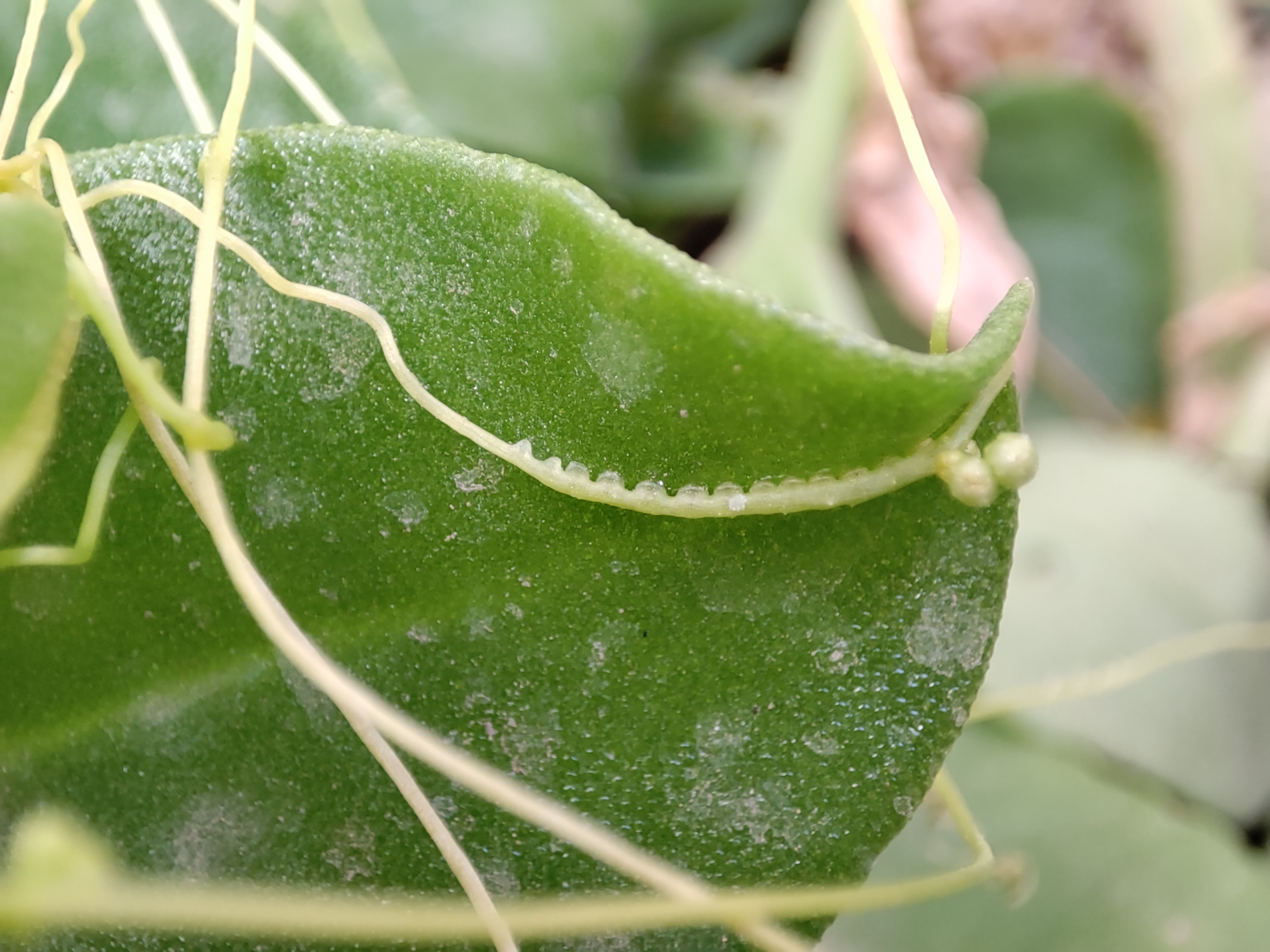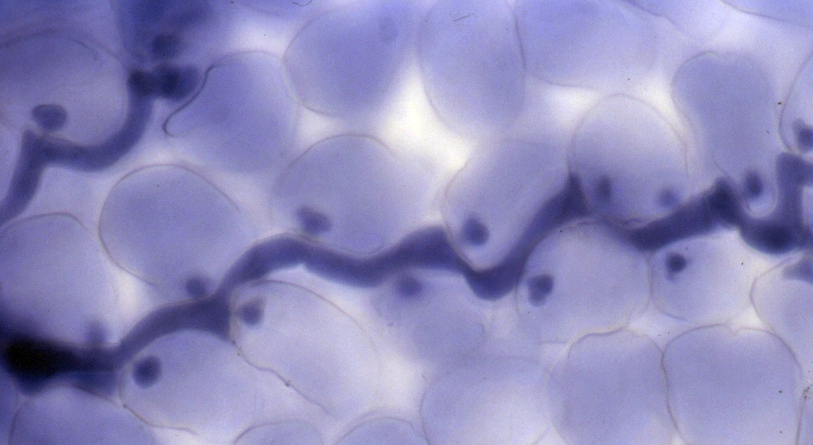|
Cassytha
''Cassytha'' is a genus of some two dozen species of obligately parasitic vines in the family Lauraceae. Superficially, and in some aspects of their ecology, they closely resemble plants in the unrelated genus ''Cuscuta'', the dodders.Weber, J. Z. A TAXONOMIC REVISION OF CASSYTHA (LAURACEAE) IN AUSTRALIA. J. Adelaide Bot. Gard. 3(3): 187-262(1981JSTOR/ref> When fruit and flowers are absent in the field, the physical resemblance is so close that few people without technical training can discern the difference. In this respect and in their ecology the two genera present a spectacular example of convergent evolution.Nickrent, D. L. 2002. Phylogenetic Origins of Parasitic Plants. Chapter 3, pp. 29–56 In J. A. López-Sáez, P. Catalán and L. Sáez ds. Parasitic Plants of the Iberian Peninsula and Balearic Islands. Mundi-Prensa, Madrid. Nonetheless, Nickrent comments that "''Cassytha'' is uneqivocally assigned to Lauraceae based on (both) morphological and molecular data." I ... [...More Info...] [...Related Items...] OR: [Wikipedia] [Google] [Baidu] |
Cassytha Filiformis
''Cassytha filiformis'' or love-vine is an orangish, wiry, parasitic vine in the family Lauraceae. It is found in coastal forests of warm tropical regions worldwide including the Americas, Indomalaya, Australasia, Polynesia and tropical Africa. It is an obligate parasite, meaning it cannot complete its life-cycle without another host plant. Research in Florida (in southeast United States) has found that love-vine inhibits gall wasps by attacking the galls (small growths on plants) that the wasps create for their young. Description Vines ''Cassytha filiformis'' is a twining vine with yellow or orange to pale green hollow stems with a length between 3–8 metres long. The stems attach to host plants by growing shoots from the base of its root, they have haustoria that fold inside the hosts' phloem and xylem membranes to absorb water and nutrients. The young shoots are slightly thicker and slightly darker than the unrelated dodder. but otherwise remarkably similar. File: ... [...More Info...] [...Related Items...] OR: [Wikipedia] [Google] [Baidu] |
Lauraceae
Lauraceae, or the laurels, is a plant Family (biology), family that includes the bay laurel, true laurel and its closest relatives. This family comprises about 2850 known species in about 45 genus (biology), genera worldwide. They are dicotyledons, and occur mainly in warm temperate and tropical regions, especially Southeast Asia and South America. Many are aromatic evergreen trees or shrubs, but some, such as ''Sassafras'', are deciduous, or include both deciduous and evergreen trees and shrubs, especially in tropical and temperate climates. The genus ''Cassytha'' is unique in the Lauraceae in that its members are parasite, parasitic vines. Most laurels are highly poisonous. Overview The family has a worldwide distribution in tropical and warm climates. The Lauraceae are important components of tropical forests ranging from low-lying to Montane forest, montane. In several forested regions, Lauraceae are among the top five families in terms of the number of species present. T ... [...More Info...] [...Related Items...] OR: [Wikipedia] [Google] [Baidu] |
Cuscuta
''Cuscuta'' (), commonly known as dodder or amarbel, is a genus of over 201 species of yellow, orange, or red (rarely green) parasitic plants. Formerly treated as the only genus in the family Cuscutaceae, it now is accepted as belonging in the morning glory family, Convolvulaceae, on the basis of the work of the Angiosperm Phylogeny Group. The genus is found throughout the middle latitudes, temperate and tropics, tropical regions of the world, with the greatest species diversity in subtropics, subtropical and tropical regions; the genus becomes rare in cool temperate climates, with only four species native to northern Europe. Folk names include strangle tare, strangleweed, scaldweed, beggarweed, lady's laces, fireweed, wizard's net, devil's guts, devil's hair, devil's ringlet, goldthread, hailweed, hairweed, hellbine, love vine, pull-down, angel hair, and witch's hair. Description ''Cuscuta'' can be identified by its thin stems appearing leafless, with the leaf, leaves reduced ... [...More Info...] [...Related Items...] OR: [Wikipedia] [Google] [Baidu] |
Love Vine
{{Plant common name ...
The name Love vine is variously applied to: * ''Cassytha'' species alleged to have aphrodisiac properties * ''Clematis virginiana'', a North American ornamental vine. * ''Cuscuta'' species confused with ''Cassytha'' * '' Ipomoea lobata'', or '' Mina lobata'', a Brazilian vine related to Morning glory Morning glory (also written as morning-glory) is the common name for over 1,000 species of flowering plants in the family Convolvulaceae, whose taxonomy and systematics remain in flux. These species are distributed across numerous genus, gene ... [...More Info...] [...Related Items...] OR: [Wikipedia] [Google] [Baidu] |
Raceme
A raceme () or racemoid is an unbranched, indeterminate growth, indeterminate type of inflorescence bearing flowers having short floral stalks along the shoots that bear the flowers. The oldest flowers grow close to the base and new flowers are produced as the shoot grows in height, with no predetermined growth limit. Examples of racemes occur on mustard (genus ''Brassica''), radish (genus ''Raphanus''), and orchid (genus ''Phalaenopsis'') plants. Definition A ''raceme'' or ''racemoid'' is an unbranched, indeterminate growth, indeterminate type of inflorescence bearing pedicellate flowers (flowers having short floral stalks called ''Pedicel (botany), pedicels'') along its axis. In botany, an ''axis'' means a shoot, in this case one bearing the flowers. In indeterminate inflorescence-like racemes, the oldest flowers grow close to the base and new flowers are produced as the shoot grows in height, with no predetermined growth limit. A plant that flowers on a showy raceme may hav ... [...More Info...] [...Related Items...] OR: [Wikipedia] [Google] [Baidu] |
Haustorium
In botany and mycology, a haustorium (plural haustoria) is a rootlike structure that grows into or around another structure to absorb water or nutrients. For example, in mistletoe or members of the broomrape family, the structure penetrates the host's tissue and draws nutrients from it. In mycology, it refers to the appendage or portion of a parasitic fungus (the hyphal tip), which performs a similar function. Microscopic haustoria penetrate the host plant's cell wall and siphon nutrients from the space between the cell wall and plasma membrane but do not penetrate the membrane itself. Larger (usually botanical, not fungal) haustoria do this at the tissue level. The etymology of the name corresponds to the Latin word '' haustor'' meaning ''the one who draws, drains or drinks'', and refers to the action performed by the outgrowth. In fungi Fungi in all major divisions form haustoria. Haustoria take several forms. Generally, on penetration, the fungus increases the surface ar ... [...More Info...] [...Related Items...] OR: [Wikipedia] [Google] [Baidu] |
Uniseriate
{{Short pages monitor ... [...More Info...] [...Related Items...] OR: [Wikipedia] [Google] [Baidu] |
Australasian Realm
The Australasian realm is one of eight biogeographic realms that is coincident with, but not (by some definitions) the same as, the geographical region of Australasia. The realm includes Australia, the island of New Guinea (comprising Papua New Guinea and the Indonesian province of Papua), and the eastern part of the Indonesian archipelago, including the island of Sulawesi, the Moluccas (the Indonesian provinces of Maluku and North Maluku), and the islands of Lombok, Sumbawa, Sumba, Flores, and Timor, often known as the Lesser Sundas. The Australasian realm also includes several Pacific island groups, including the Bismarck Archipelago, Vanuatu, the Solomon Islands, and New Caledonia. New Zealand and its surrounding islands are a distinctive sub-region of the Australasian realm. The rest of Indonesia is part of the Indomalayan realm. In the classification scheme developed by Miklos Udvardy, New Guinea, New Caledonia, Solomon Islands and New Zealand are placed in the ... [...More Info...] [...Related Items...] OR: [Wikipedia] [Google] [Baidu] |
Obligate Parasite
An obligate parasite or holoparasite is a parasitic organism that cannot complete its life-cycle without exploiting a suitable host. If an obligate parasite cannot obtain a host it will fail to reproduce. This is opposed to a facultative parasite, which can act as a parasite but does not rely on its host to continue its life-cycle. Obligate parasites have evolved a variety of parasitic strategies to exploit their hosts. It is advantageous for the parasite to preserve the health of its host when this is compatible with its nutritional and reproductive requirements, except when the death of the host is necessary for transmission.Combes, C. (1997) Fitness of Parasites: Pathology and Selection ''International Journal for Parasitology'' 27 (1): 1–10. Species Obligate parasitism is exhibited in a range of organisms, with examples in viruses, bacteria, fungi, plants, and animals.Balashov, Yu.S. (2011) Parasitism and Ecological Parasitology. ''Entomological Review'' 91 (9): 1216–1223. ... [...More Info...] [...Related Items...] OR: [Wikipedia] [Google] [Baidu] |
Herbaceous Plant
Herbaceous plants are vascular plants that have no persistent woody stems above ground. This broad category of plants includes many perennials, and nearly all annuals and biennials. Definitions of "herb" and "herbaceous" The fourth edition of the '' Shorter Oxford English Dictionary'' defines "herb" as: # "A plant whose stem does not become woody and persistent (as in a tree or shrub) but remains soft and succulent, and dies (completely or down to the root) after flowering"; # "A (freq. aromatic) plant used for flavouring or scent, in medicine, etc.". (See: Herb) The same dictionary defines "herbaceous" as: # "Of the nature of a herb; esp. not forming a woody stem but dying down to the root each year"; # "BOTANY Resembling a leaf in colour or texture. Opp. scarious". Botanical sources differ from each other on the definition of "herb". For instance, the Hunt Institute for Botanical Documentation includes the condition "when persisting over more than one growing season, th ... [...More Info...] [...Related Items...] OR: [Wikipedia] [Google] [Baidu] |



